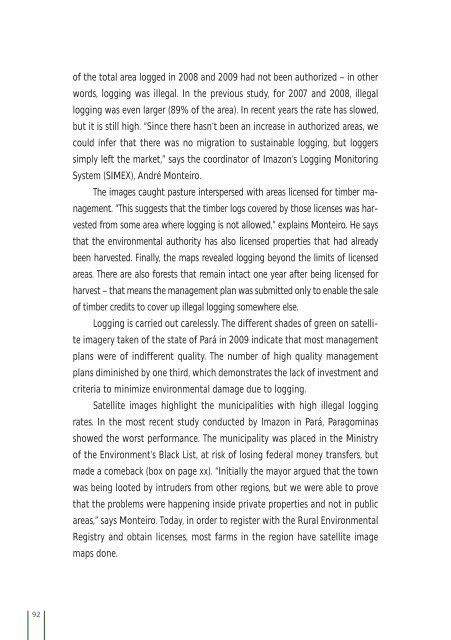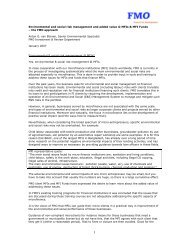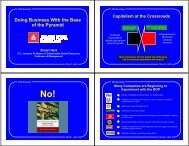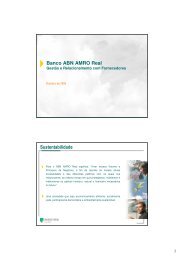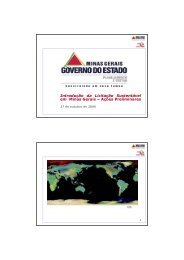From the forest to the consumer - GVces - Fundação Getulio Vargas
From the forest to the consumer - GVces - Fundação Getulio Vargas
From the forest to the consumer - GVces - Fundação Getulio Vargas
Create successful ePaper yourself
Turn your PDF publications into a flip-book with our unique Google optimized e-Paper software.
92<br />
of <strong>the</strong> <strong>to</strong>tal area logged in 2008 and 2009 had not been authorized – in o<strong>the</strong>r<br />
words, logging was illegal. In <strong>the</strong> previous study, for 2007 and 2008, illegal<br />
logging was even larger (89% of <strong>the</strong> area). In recent years <strong>the</strong> rate has slowed,<br />
but it is still high. “Since <strong>the</strong>re hasn’t been an increase in authorized areas, we<br />
could infer that <strong>the</strong>re was no migration <strong>to</strong> sustainable logging, but loggers<br />
simply left <strong>the</strong> market,” says <strong>the</strong> coordina<strong>to</strong>r of Imazon’s Logging Moni<strong>to</strong>ring<br />
System (SIMEX), André Monteiro.<br />
The images caught pasture interspersed with areas licensed for timber management.<br />
“This suggests that <strong>the</strong> timber logs covered by those licenses was harvested<br />
from some area where logging is not allowed,” explains Monteiro. He says<br />
that <strong>the</strong> environmental authority has also licensed properties that had already<br />
been harvested. Finally, <strong>the</strong> maps revealed logging beyond <strong>the</strong> limits of licensed<br />
areas. There are also <strong>forest</strong>s that remain intact one year after being licensed for<br />
harvest – that means <strong>the</strong> management plan was submitted only <strong>to</strong> enable <strong>the</strong> sale<br />
of timber credits <strong>to</strong> cover up illegal logging somewhere else.<br />
Logging is carried out carelessly. The different shades of green on satellite<br />
imagery taken of <strong>the</strong> state of Pará in 2009 indicate that most management<br />
plans were of indifferent quality. The number of high quality management<br />
plans diminished by one third, which demonstrates <strong>the</strong> lack of investment and<br />
criteria <strong>to</strong> minimize environmental damage due <strong>to</strong> logging.<br />
Satellite images highlight <strong>the</strong> municipalities with high illegal logging<br />
rates. In <strong>the</strong> most recent study conducted by Imazon in Pará, Paragominas<br />
showed <strong>the</strong> worst performance. The municipality was placed in <strong>the</strong> Ministry<br />
of <strong>the</strong> Environment’s Black List, at risk of losing federal money transfers, but<br />
made a comeback (box on page xx). “Initially <strong>the</strong> mayor argued that <strong>the</strong> <strong>to</strong>wn<br />
was being looted by intruders from o<strong>the</strong>r regions, but we were able <strong>to</strong> prove<br />
that <strong>the</strong> problems were happening inside private properties and not in public<br />
areas,” says Monteiro. Today, in order <strong>to</strong> register with <strong>the</strong> Rural Environmental<br />
Registry and obtain licenses, most farms in <strong>the</strong> region have satellite image<br />
maps done.


